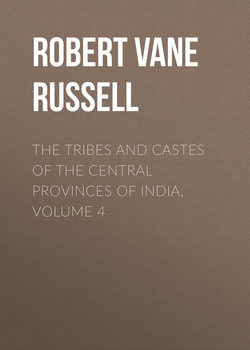Читать книгу The Tribes and Castes of the Central Provinces of India, Volume 4 - Robert Vane Russell - Страница 22
Part II
Articles on Castes and Tribes
Kumhār—Yemkala
Vol. IV
Kunbi
9. Widow-marriage
ОглавлениеThe Kunbis permit the remarriage of widows, with the exception of the Deshmukh families of the Tirole subcaste who have forbidden it. If a woman’s husband dies she returns to her father’s house and he arranges her second marriage, which is called choli-pātal, or giving her new clothes. He takes a price for her which may vary from twenty-five to five hundred rupees according to the age and attractions of the woman. A widow may marry any one outside the family of her deceased husband, but she may not marry his younger brother. This union, which among the Hindustāni castes is looked upon as most suitable if not obligatory, is strictly forbidden among the Marātha castes, the reason assigned being that a wife stands in the position of a mother to her husband’s younger brothers. The contrast is curious. The ceremony of widow-marriage is largely governed by the idea of escaping or placating the wrath of the first husband’s ghost, and also of its being something to be ashamed of and contrary to orthodox Hinduism. It always takes place in the dark fortnight of the month and always at night. Sometimes no women are present, and if any do attend they must be widows, as it would be the worst of omens for a married woman or unmarried girl to witness the ceremony. This, it is thought, would lead to her shortly becoming a widow herself. The bridegroom goes to the widow’s house with his male friends and two wooden seats are set side by side. On one of these a betel-nut is placed which represents the deceased husband of the widow. The new bridegroom advances with a small wooden sword, touches the nut with its tip, and then kicks it off the seat with his right toe. The barber picks up the nut and burns it. This is supposed to lay the deceased husband’s spirit and prevent his interference with the new union. The bridegroom then takes the seat from which the nut has been displaced and the woman sits on the other side to his left. He puts a necklace of beads round her neck and the couple leave the house in a stealthy fashion and go to the husband’s village. It is considered unlucky to see them as they go away because the second husband is regarded in the light of a robber. Sometimes they stop by a stream on the way home, and, taking off the woman’s clothes and bangles, bury them by the side of the stream. An exorcist may also be called in, who will confine the late husband’s spirit in a horn by putting in some grains of wheat, and after sealing up the horn deposit it with the clothes. When a widower or widow marries a second time and is afterwards attacked by illness, it is ascribed to the illwill of their former partner’s spirit. The metal image of the first husband or wife is then made and worn as an amulet on the arm or round the neck. A bachelor who wishes to marry a widow must first go through a mock ceremony with an ākra or swallow-wort plant, as the widow-marriage is not considered a real one, and it is inauspicious for any one to die without having been properly married once. A similar ceremony must be gone through when a man is married for the third time, as it is held that if he marries a woman for the third time he will quickly die. The ākra or swallow-wort (Calotropis gigantea) is a very common plant growing on waste land with mauve or purple flowers. When cut or broken a copious milky juice exudes from the stem, and in some places parents are said to poison children whom they do not desire to keep alive by rubbing this on their lips.
